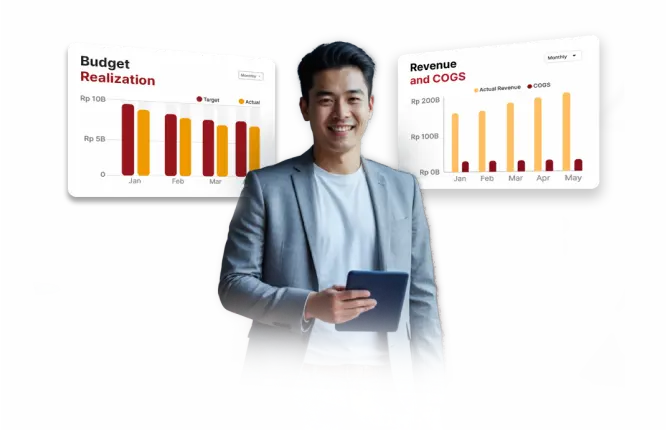I often find myself stuck in back-to-back Zoom meetings that feel never-ending. Before the day even ends, I’m already drained of energy. This exhaustion is what we call Zoom fatigue.
Ever since the pandemic, video conferences have become part of daily life. The shift from real, face-to-face interaction to staring at a screen for hours has taken a toll on my focus and mood.
If you’ve been feeling the same, it’s time to find a smarter solution to manage your learning or work environment. Try HashMicro School Management Software to simplify online collaboration. Book a free demo today!

Key Takeaways
|
What is Zoom Fatigue?
I used to get confused when I first heard the term Zoom fatigue, thinking it was the same as burnout. Burnout happens after a long day of work, while Zoom fatigue is the physical and mental exhaustion I feel after spending too much time in video meetings. It affects my focus, mood, and overall well-being.
Also read: 3 Benefits of School Asset Tracking Software
Why are Virtual Meetings Tiring?
During the pandemic, I relied heavily on video conferencing platforms that made communication much easier. While they offered many advantages, I also began noticing how they quietly drained my energy over time.
One major cause of Zoom fatigue is excessive eye contact. In virtual meetings, faces appear too close, and constant staring creates a sense of intensity and pressure, making our brains feel overstimulated.
Another factor is the lack of movement. Unlike in-person meetings, we sit still for long periods and exaggerate facial expressions to be understood, which leads to quicker exhaustion.
Also read: 5 Techniques to Build an Effective Teacher Professional Development Plan
Recognize Zoom Meeting Fatigue
Even months into the pandemic, I still rely on video conferencing to teach and communicate with others. It’s no surprise that Zoom fatigue has become a real challenge, often leaving me mentally drained after long online sessions.
Our brains also struggle to adjust to virtual interactions. Even slight delays in video or audio make conversations feel unnatural, causing mental strain and frustration over time.
Teachers naturally thrive in face-to-face settings where they can read students’ expressions and body language. Recognizing that Zoom fatigue is real is the first step toward finding ways to overcome it.
Zoom Fatigue Solutions
Even though Zoom fatigue feels exhausting and hard to avoid, I’ve learned that there are actually several ways to reduce it. Here are some approaches I personally find effective:
Avoid multitasking when you can
During video conferences, it’s tempting to multitask, thinking it boosts productivity. In reality, juggling multiple tasks or media at once only increases fatigue and makes simple work feel more demanding.
Hide self-view

Using Zoom often makes us overly aware of our appearance, leading to constant self-watching and distraction. Turning off your self-view helps reduce anxiety and lets you focus better on the discussion.
Try to attend group meetings in quiet spaces
In video conferences, even small sounds like typing or chair movement are amplified, often causing stress and distraction. Finding a quiet space or using noise-cancelling headphones helps create a calmer environment and improves focus.
Schedule Breaks
After hours of back-to-back Zoom meetings, your body and mind need a break. Turn off your camera occasionally, stretch, and take 10-minute pauses between sessions to rest your eyes and recharge.
How Zoom Fatigue Impacts Communication with Students
As a teacher, I’ve noticed that video conferences limit my use of nonverbal cues and microexpressions, which makes teaching feel less natural. Since I can’t replace these sessions with emails or chats, I make sure to take short breaks between long Zoom meetings to stay focused and refreshed.
“Zoom fatigue is more than just tiredness, it’s cognitive overload from constant virtual interaction. Managing screen time and setting boundaries are key to maintaining focus and mental well-being.”
— Angela Tan, Regional Manager
Conclusion
Feeling tired during a busy workday is completely normal, and so is experiencing Zoom fatigue. I’ve learned that recognizing its impact is the first step to managing it better. As an educator, communicating smoothly through video calls can be tough, but using a School Management System helps me keep lessons organized and student evaluations accurate.
As a teacher, being preoccupied with so much data can interfere with your performance. But the School Management System can simplify your complex work so you can focus on creating a healthy environment for your students. Now you can try the software demo for free by filling out the form on our website.

FAQ About Zoom Fatigue
-
How can you overcome Zoom fatigue?
Give yourself room to breathe during meetings. Try leaning back or moving your chair slightly away from the screen. Creating physical distance while staying engaged can help reduce the mental strain of long video calls.
-
What is another term for Zoom fatigue?
Zoom fatigue, also known as videoconference fatigue, refers to physical and mental exhaustion resulting from excessive or improper use of video conferencing platforms. It often brings symptoms like tiredness, stress, anxiety, and overall burnout.
-
Is virtual meeting fatigue a real thing?
Yes, it is. Research confirms that virtual meeting fatigue is a real neurological response. Studies using brain and heart monitoring reveal that video meetings are more draining than in-person ones—but small adjustments can improve focus and reduce fatigue.













